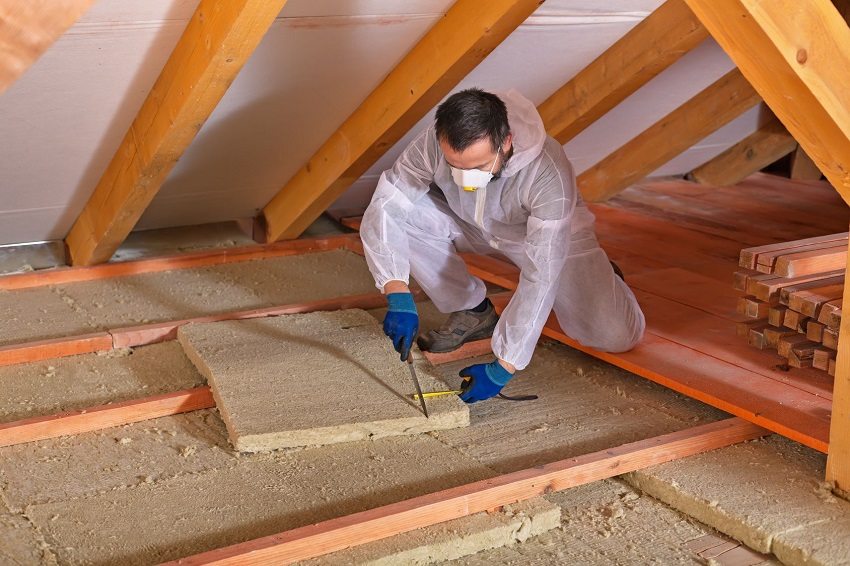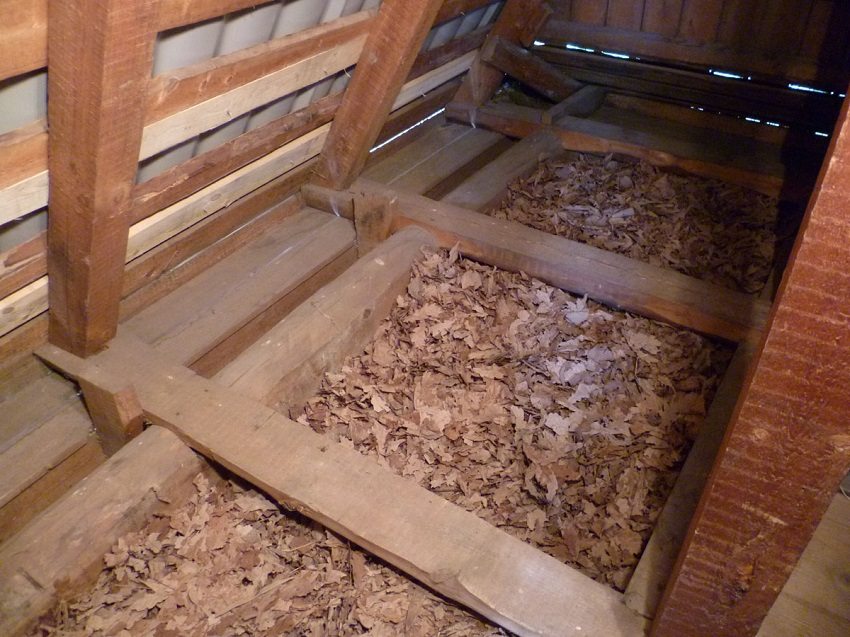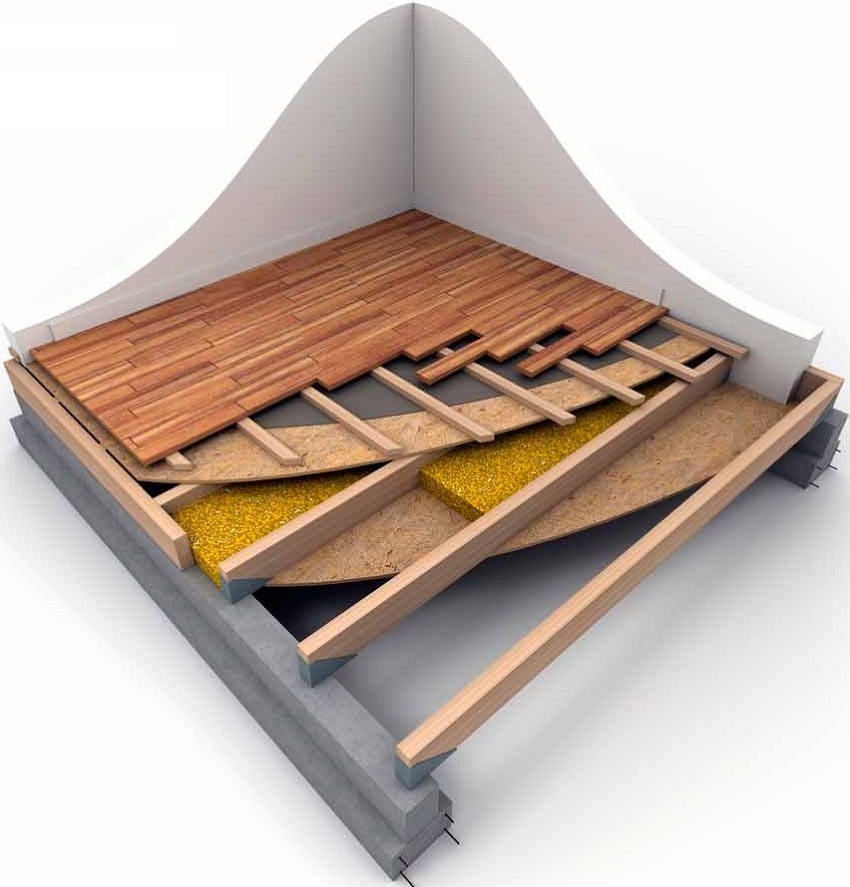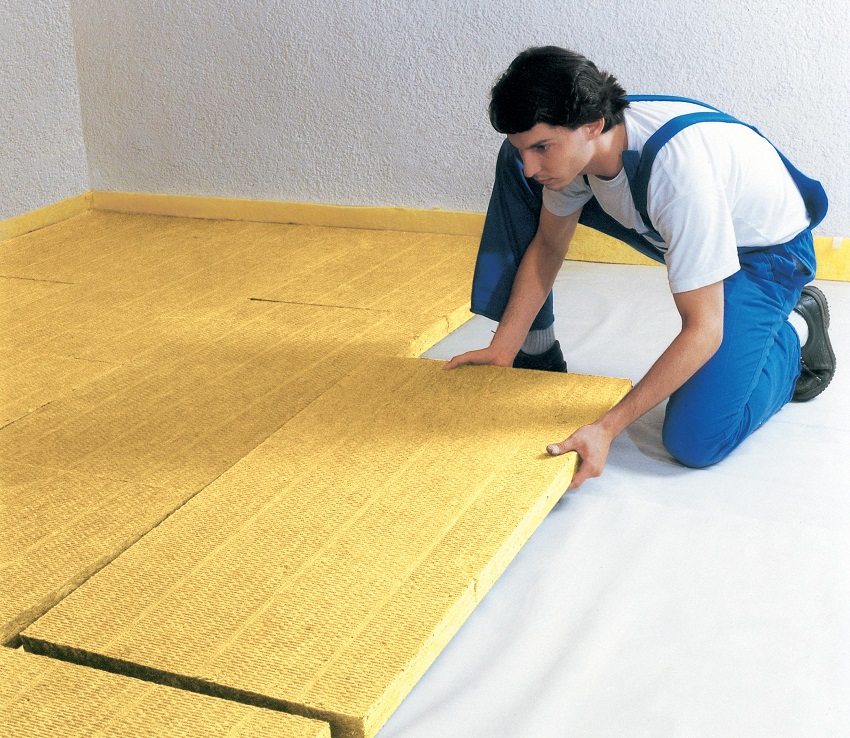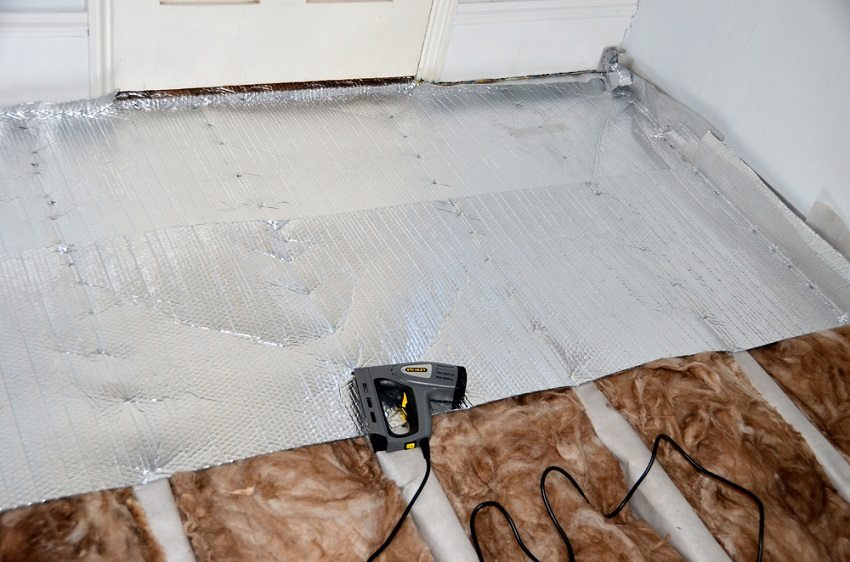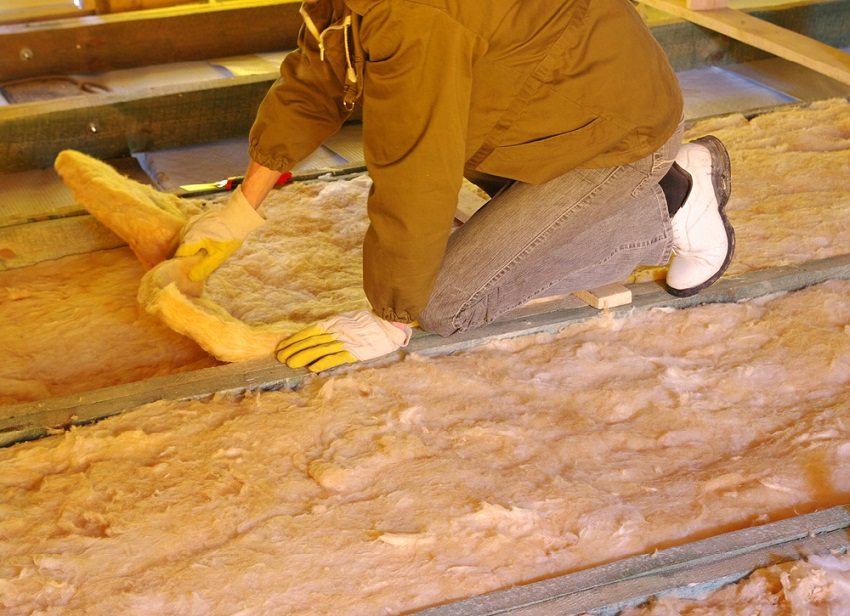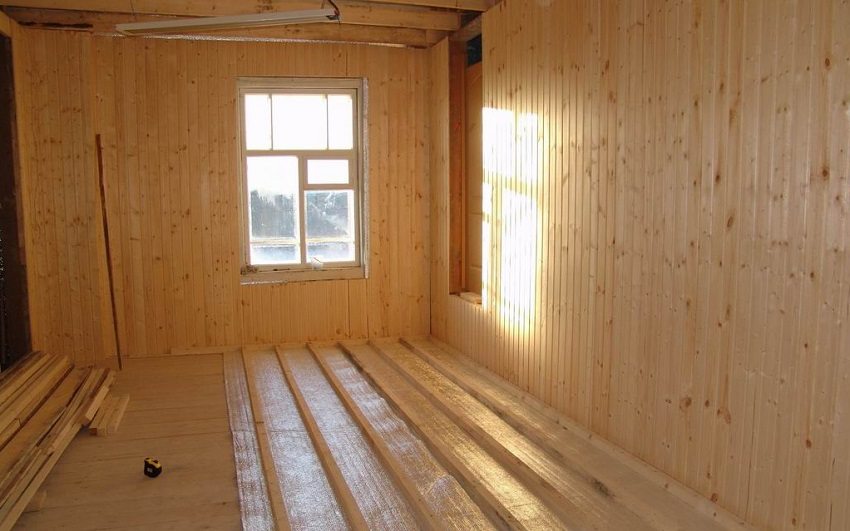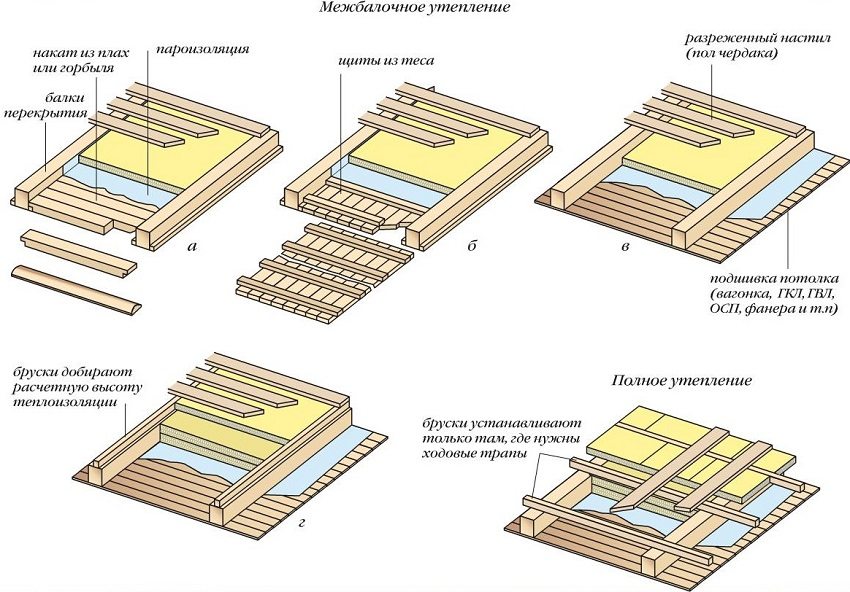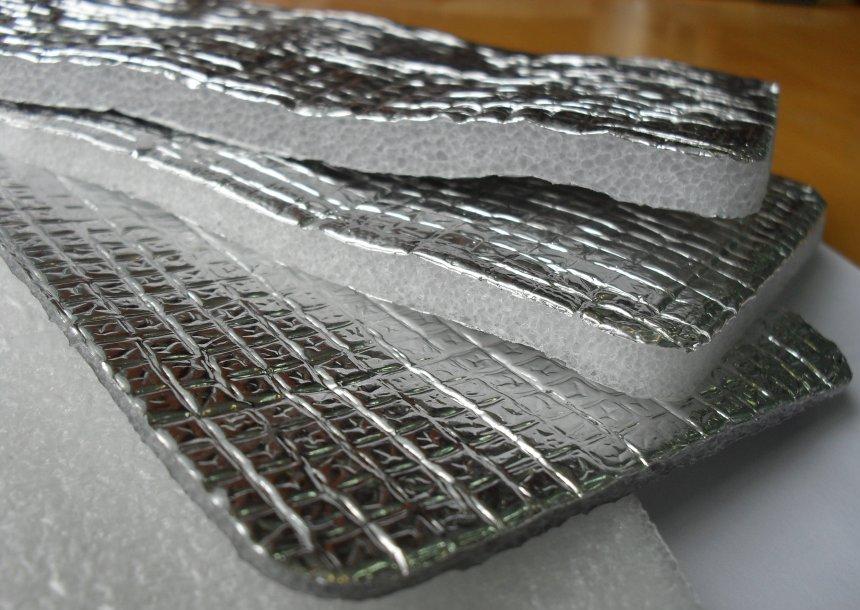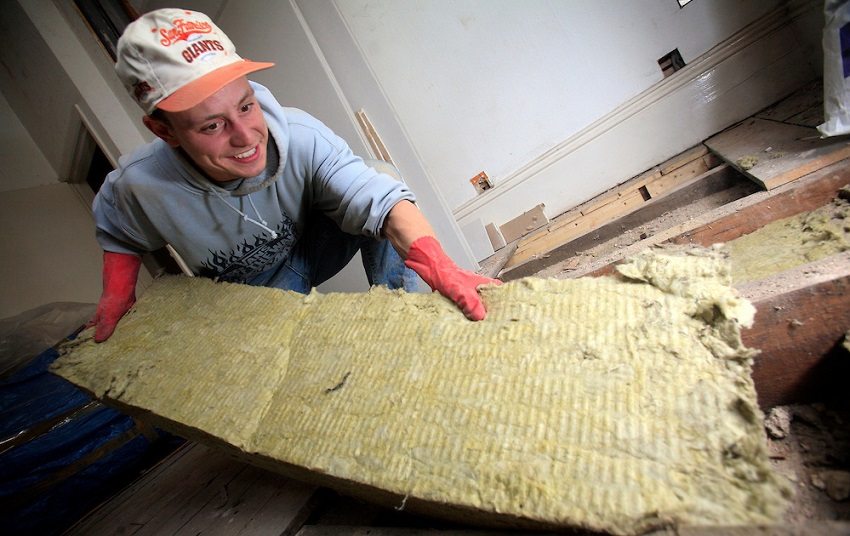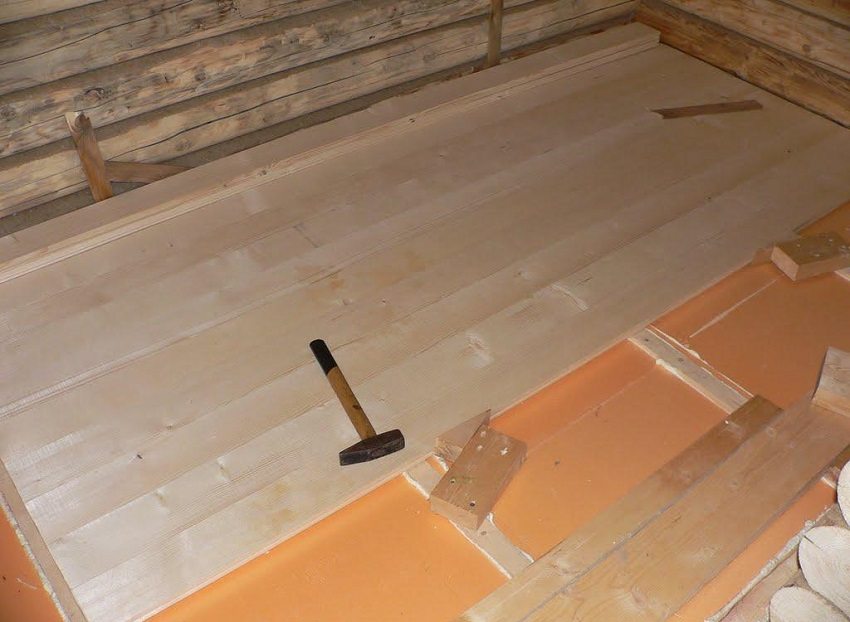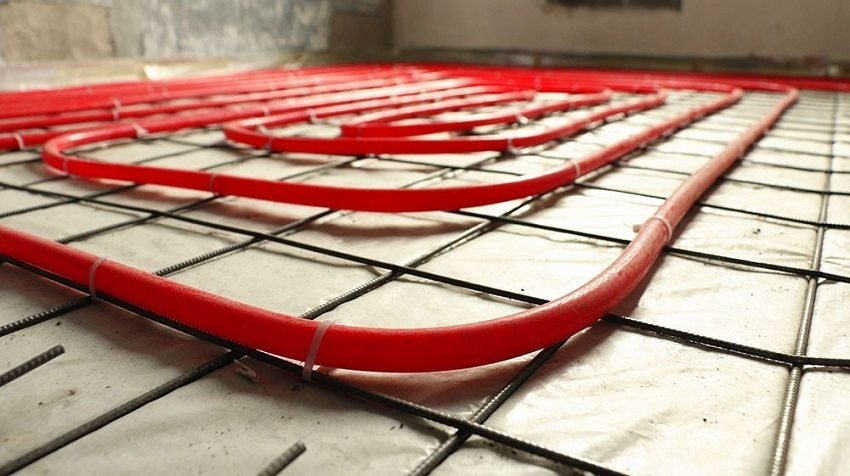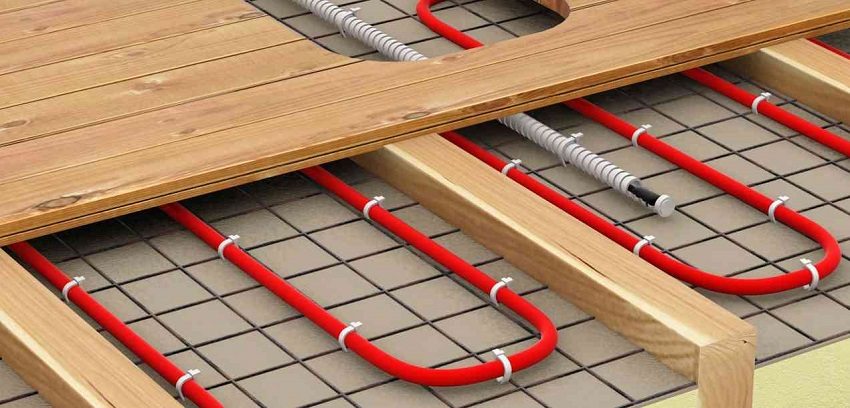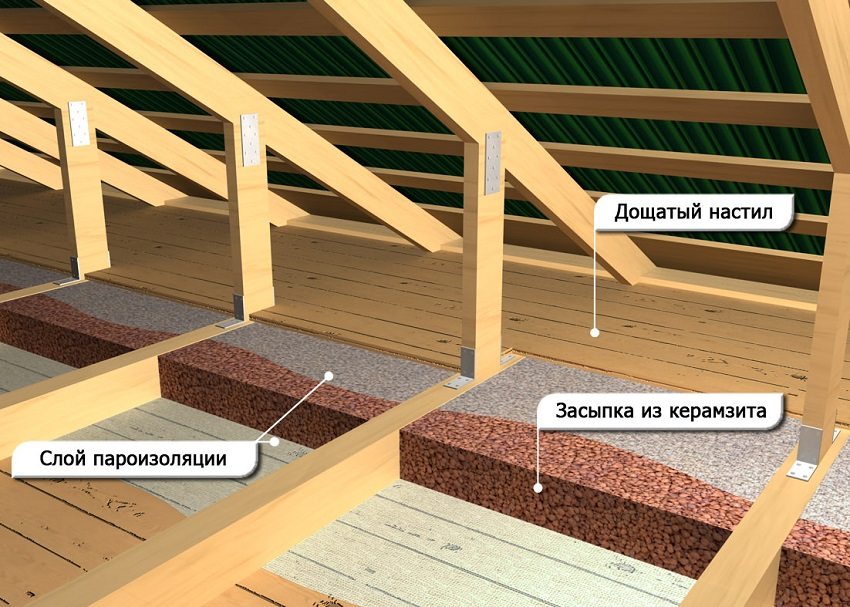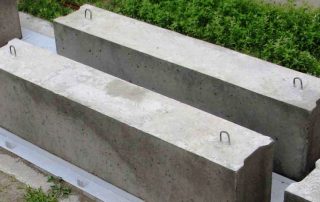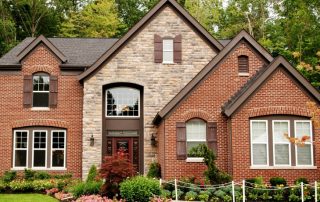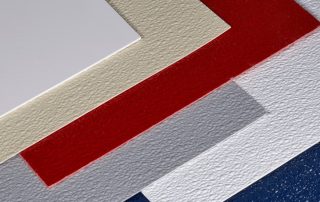Floor insulation plays a very important role in the overall insulation of the house. It is best to do this even at the construction stage, then you will not have to dismantle the existing flooring for insulation, and the consumption of time, effort and building materials will be minimized. If you need to insulate the floor in an already inhabited house, then this will be somewhat more difficult. First you need to decide what will be used as insulation for the floor in a wooden house, which one is better to choose to create high thermal insulation.
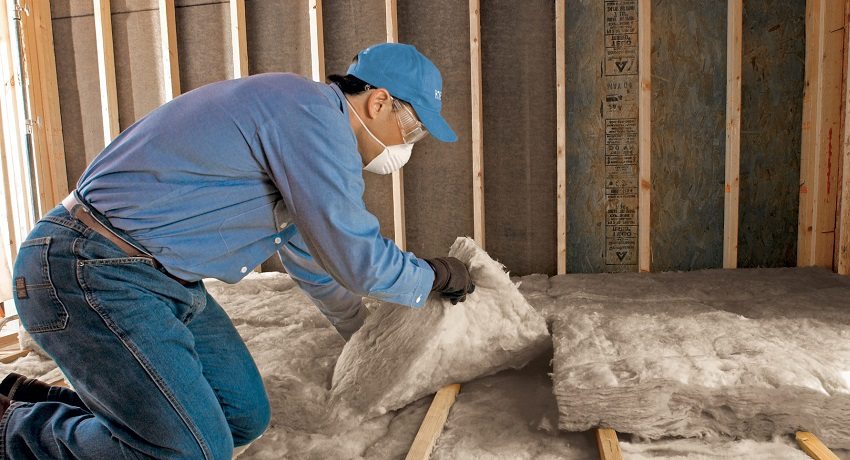
Warming wood floor glass wool
Content [Hide]
The choice of material for insulation
The selection of thermal insulation materials should be treated with the utmost responsibility. In many ways, the choice will depend on the financial well-being of the owner of the house, but you should not save on insulation. Remember that heat loss is the consumption of excess electricity for heating the home, which means additional financial costs.
What insulation for the floor in a wooden house is better? You can find out by considering the advantages and disadvantages of each type of thermal insulation materials.
Each of these materials has its own characteristics, as well as installation nuances. In order to choose the best way to insulate the floor in a wooden house, the following parameters should be considered:
- indoor conditions - average humidity and air temperature, extreme values of these indicators and the frequency of their changes;
- the estimated thickness of the insulation layer;
- expected floor loads and general conditions of its operation;
- the estimated weight of the entire floor structure.
Related article:
Vapor barrier for the walls of a wooden house: materials and installation features... The main materials used for vapor barrier, their pros and cons. Features of the installation of vapor barrier.
How to properly insulate the floor in a wooden house with sawdust
Using ordinary wood sawdust for floor insulation is one of the easiest ways to increase the level of thermal insulation. Sawdust has a number of advantages:
- relatively low cost of the material - sawdust will be cheaper than mineral wool or expanded clay;
- environmental friendliness - wood sawdust is absolutely safe for human life and health, does not cause allergies;
- ease of installation - in order to insulate the floor with sawdust, you just need to fill them with an even layer under the floor covering;
- they easily fall asleep in hard-to-reach places - with sawdust, you can insulate cracks, dips and other places where it is impossible to mount other types of insulation.
You can also use various building materials that have sawdust in their composition. This includes sawdust concrete, arbolite, wood blocks and sawdust pellets. But most often sawdust is used in its pure form.
Useful advice!When choosing a floor insulation in a wooden house, use sawdust only if you are not afraid of an increased fire hazard. Otherwise, it is better to opt for a less flammable material.
The subtleties of using mineral wool
If the question arises as to what is the best insulation for the floor in a wooden house, then mineral wool is one of the most popular options today. Firstly, mineral wool is the best combination in terms of price and quality. Secondly, it has a lot of advantages:
- low level of thermal conductivity, due to which heat loss in the house during the cold period is minimized;
- high water repellency, that is, mineral wool does not allow moisture to pass through, therefore this type of insulation can be installed in houses with high humidity;
- incombustibility of the material, which greatly reduces the risk of fire in wooden house;
- durability - insulation of floors in a wooden house from below with mineral wool guarantees you a long service life of insulation, much longer than sawdust or other similar materials;
- environmental safety - mineral wool is absolutely safe for human health, does not cause allergies;
- a high level of resistance to decay - this type of insulation firmly withstands the effects of an aggressive chemical environment, tolerates temperature extremes and other adverse effects well;
- affordable price - mineral wool is more expensive than sawdust, but cheaper than many other heaters;
- high level of sound insulation. By insulating your home with mineral wool, you not only reduce heat loss, but also minimize the noise level entering the house from the street.
A number of disadvantages of the material stem from its advantages. One of the main ones is low vapor permeability, due to which water condensate can accumulate on the insulation. If you have planned floor insulation with mineral wool, then you should take care of a good vapor barrier.
In addition, mineral wool cakes over time, and thermal insulation decreases. Therefore, when insulating a wooden floor from below in a private house using mineral wool, several overlap layers should be mounted.
Mineral wool is mounted without gaps, and a vapor barrier is placed on top of the insulation layer with the obligatory gluing of the seams. This will protect the insulation itself from moisture condensation on it from the warm air from the house.
Features of using penofol
Penofol has been used for floor insulation relatively recently, and is not yet very popular. It is a roll of material that consists of several layers: insulation and reflective aluminum foil. When insulating the floor with penofol in a wooden house, you get the following advantages:
- Simplicity and ease of installation - penofol can be installed even without special skills in the field of construction.
- High resistance to mechanical stress - the material can withstand high pressure, impacts and much more.
- High density of the material, so that it can be mounted with a not too thick layer.
- When insulating the floor with foam foam, you do not have to additionally install a vapor barrier, since condensate does not concentrate on this insulation.
Useful advice! When buying penofol for floor insulation in your home, do not be afraid of its relatively high price: the excellent performance characteristics of the material more than compensate for it.
How to properly insulate floors in a wooden house using penofol? To do this, follow these steps:
- First, a waterproofing layer is installed. It can be a special film or just an additional layer of foam foam.
- Then the insulation itself is laid, all seams and joints are filled with polyurethane foam.
- On top of the foam layer, wooden logs are mounted. The distance between them must be at least 50 cm.
- Penofol is again laid between the lags, and all seams and cracks are filled with polyurethane foam.
- Wooden boards or chipboard sheets are laid on top.
Foam insulation
Polyfoam is another type of insulation, which in popularity is almost on a par with mineral wool. It favorably differs from the latter in that it does not absorb moisture, does not cake and, accordingly, does not lose its thermal insulation properties over time. In addition, when insulating the floor in a wooden house from below using foam plastic, you get the following advantages:
- A high level of material strength, it tolerates mechanical stress well.
- Low thermal conductivity, meaning even a relatively small layer of foam will prevent heat loss in your home.
- Resistant to fire.
- Resistance to all kinds of negative environmental influences. Polyfoam successfully resists aggressive chemical environments, temperature extremes.
- Styrofoam is not afraid of rodents, so if you are looking for a type of floor insulation in a wooden house against mice, then this is a great option.
- Does not rot or mold.
Thermal insulation with ecowool
When insulating the floor in a private house with your own hands using ecowool, it should be borne in mind that this will be less effective and take more time than installing the same insulation using special blowing machines. Nevertheless, it is possible to insulate the floor with ecowool without using specialized equipment. For this, sheets of material are laid between the pre-assembled wooden logs.
The advantages of ecowool are a high level of thermal insulation, impressive durability and resistance to adverse environmental influences. The disadvantage of the material is its high cost and the need to use specialized equipment for high-quality installation. A video of floor insulation in a wooden house using mineral wool with your own hands greatly facilitates the process, so do not be lazy to watch it before starting work.

Ecowool is resistant to ignition due to non-volatile flame-extinguishing substances in the composition
Floor insulation with penoplex
If you are insulating the wooden floor of the house with penoplex, then the installation scheme here is the same as in the case of mineral wool. First, a layer of insulation is laid, then the seams are filled with polyurethane foam. If necessary, penoplex can be laid in several layers. The advantages of the material are as follows:
- With foam insulation, vapor barrier is not needed, since condensate does not accumulate on it.
- Penoplex is not afraid of rodents and insects, it does not need to be additionally protected from moisture or mechanical damage.
- The material boasts a solid service life, while its thermal insulation properties do not change over time.
The only significant disadvantage of penoplex is the rather high price of the material. It is more expensive than mineral wool or foam, but it has better performance characteristics.
Using the "warm floor" system
If you want to use the most advanced technologies, then the "warm floor" system comes to the rescue. This can be a hot water pipeline network, which is mounted under a layer of insulation or a flooded floor.
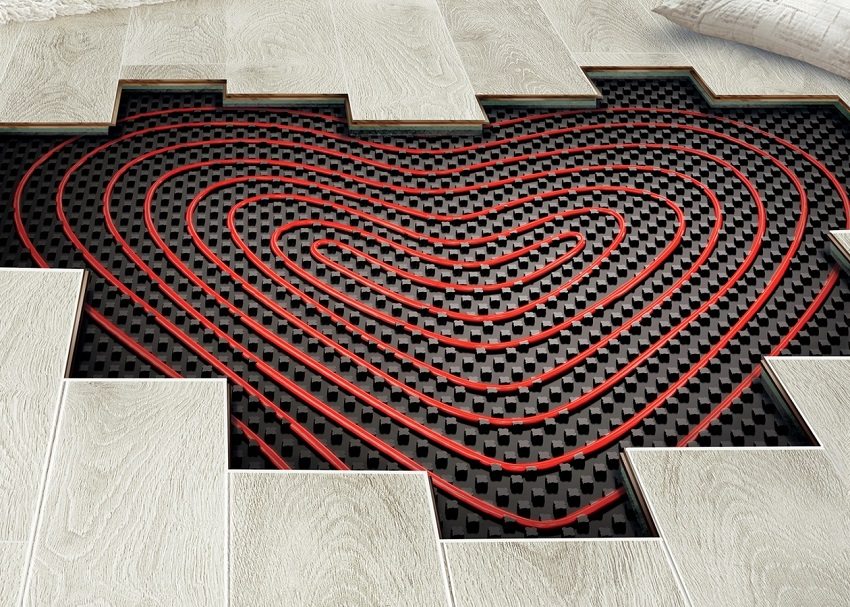
Installation of water floor heating on expanded polystyrene mats
However, a much easier option in installation and operation is electric underfloor heating. You can buy such a system in any specialized store and install it without having specialized skills in the field of construction. The price of floor insulation in a wooden house based on such a system will be quite high, but its effectiveness is worth it.
Insulated floor care tips
After completing the process of installing the insulation, you should regularly take measures to maintain the floor. This will help extend its service life and maintain high thermal insulation properties. To do this, you need to follow these recommendations:
- do not walk on the insulated floor in street shoes - small stones, dirt and solid particles act on the floor like sandpaper;
- for cleaning, it is best to use a powerful vacuum cleaner, it will effectively remove all dust even in the most inaccessible places;
- direct sunlight has a bad effect on the wooden floor, so it is worth protecting it from their effects;
- where the maximum load on the floor is expected, it is best to protect it with rugs.
Useful advice! The biggest enemy of wood flooring is moisture. Therefore, great attention should be paid to waterproofing. To do this, in places of expected exposure to water, you can lay a moisture-resistant coating.
It does not matter whether you use expanded clay, mineral wool, foam plastic or underfloor heating to insulate floors in a wooden house, following these recommendations will allow you to significantly extend the life of the insulation and prevent the loss of thermal insulation properties.
Insulation for the floor in a wooden house, which manufacturer is better and how much the material costs
In the modern market of manufacturers of floor insulation materials, there are several popular brands that are most often used for thermal insulation of private houses:
- Rockwool - one of the most popular brands, produces basalt insulation for walls, roofs and floors, characterized by high quality, density, non-combustibility. Available in slabs. The price per square meter of insulation can vary from 135 to 200-250 rubles, depending on the brand.
- Euroizol is a mineral wool based insulation, non-combustible, with high compressive strength, low water absorption. The price per cubic meter is about 4000 rubles.
- Linrok is a ventilated non-combustible insulation, sold in slabs, used to insulate facades and floors. Price - from 140 to 170 rubles per square meter.
- Isover is a glass wool-based insulation, characterized by high tear-off density, strength and resistance to physical influences. The cost is about 150 rubles per square meter.
In addition, brands such as Ecover, Ragos, Techno, Knauf and many others are used for insulation.In order to learn how to insulate the floor in a private house with your own hands using each of them, it is recommended to watch video instructions on the Internet or read the advice of experienced builders.

